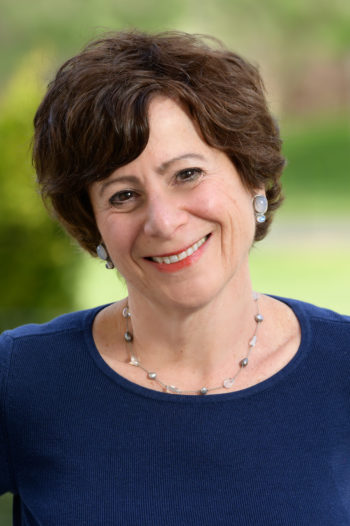2022 is the year that America revitalizes its infrastructure and philanthropy has a role to play in this discussion. Nationwide in the philanthropic community, it is rare to find a grantmaker allowing organizations to submit requests for capital expenditure (physical infrastructure) grants. Indeed, I used to work at one of those entities. Program grant applications only, please, no capital requests! Candid data illustrates philanthropic organizations in Connecticut, where our organization is located, spend only 2-5 percent of their giving yearly on nonprofit infrastructure support.
The pandemic, meanwhile, has turned a soul searching, introspective light on the philanthropic sector and its practices. As a sector, we find ourselves at a crossroads with timely questions literally at the front door. So, what about the need for the roof, HVAC system, technology, kitchen and bathroom renovations, medical equipment, and other essentials? These needs have fallen by the wayside, and leave nonprofit organizations in the lurch, scrambling to determine how they will pay for these infrastructure costs. It’s time for philanthropic entities to step up to the plate to provide this funding.
The Connecticut Health and Educational Facilities Authority (CHEFA) is one of the few grantmakers Connecticut nonprofit organizations can turn to for capital expenditure grants. We do this because our focus is tax-exempt bond and loan funding for 501(c)(3) nonprofit organizations. We’re facilitating construction, renovations, and capital needs at everything from childcare facilities to hospitals and universities. As a result of this focus, our philanthropic grant program, now celebrating its 20th year, carved out a unique niche in Connecticut philanthropy to provide not only program grants, but capital expenditure grants as well. Our Board and reviewers bring the CHEFA lens to their recommendation and approval process because it aligns with our mission and why we were created by the state in the 1960’s.
Which now brings me to three infrastructure grants CHEFA made prior to the pandemic. These grants — each of which serendipitously ended up empowering the grantees with invaluable capacity when the COVID-19 pandemic struck —serve as excellent examples of the value of investing in nonprofit infrastructure.
When the Hartford Gay & Lesbian Health Collective and United Community & Family Services (UCFS) came to CHEFA for vaccine and medication refrigeration, our internal review committee and our board of directors saw the importance of these requests and approved the grant funds. A few years later, UCFS came to us for the Accuvax Vaccine Storage system. We received the initial Letter of Interest prior to experiencing what a few short months later would be known as a once-in-a-100-years pandemic and the grant was also, ultimately, approved. Vaccine refrigeration clearly has taken on a whole new meaning in the past two years, but at the time, not knowing what would happen in the world in short order, the importance of those grants was still very evident to our reviewers. So excited were these nonprofits to receive the grants that I was invited to see the refrigerators in person and have the pictures to prove it! The truth is, these are impactful grants allowing our nonprofit organizations to fulfill their missions.
In another case, years ago, The Village for Families and Children identified the growing need for behavioral health services for children and youth. Demand from new communities and a dearth of mental health professionals necessitated creative and innovative ideas to meet the need. In 2019, a request for technology to implement teletherapy was submitted. This request, originally submitted at a time when few practitioners were thinking about telemedicine, has now become commonplace in a COVID-19 world. This was another important grant made before the headlines of children’s mental health needs became front page news above the crease. What now could be seen as prescient, these grants allowed for organizations to more readily pivot to the realities of a pandemic and serve clients with physical and behavioral health needs during challenging times.
Recently, in philanthropy, due largely to world events in the past two years, there has been a move toward General Operating Support (GOS). Although there is greater interest in GOS nowadays, let’s be honest, this conversation has been going on for years. This type of funding feasibly could provide for infrastructure needs. However, the number of funders providing GOS or funding for capital projects is still relatively small in the wider philanthropic community. In addition, if you were to ask funders about what nonprofit “infrastructure” is, they often point to leadership training, technology, research, data systems, and advocacy. Certainly, this type of “infrastructure” is also needed by our nonprofit partners but the “physical” or “capital” infrastructure has been neglected.
When reading grant applications, we all realistically understand the organization’s lights need to be turned on, the HVAC system needs to be in good working order, and the roof repaired. However, given that knowledge, how do we square the conversations on grantmaking chat boards focused on how much your philanthropic organization will support in “indirect costs”? Aren’t those indirect costs the backbone capital expenditure support that, quite literally, keeps the lights on?
When we think of partnerships with our nonprofit organizations and supporting their needs, the time has come for philanthropy to look at the options, re-think the “program only” mindset, and listen to organizations talk about impactful grantmaking. It may just take the form of a refrigerator.
Betty Sugerman Weintraub is the Manager of Grant Programs and Philanthropic Outreach at the CT Health and Educational Facilities Authority (CHEFA) in Hartford, CT. She previously was the Associate Director for Community Initiatives at a CT bank foundation.




